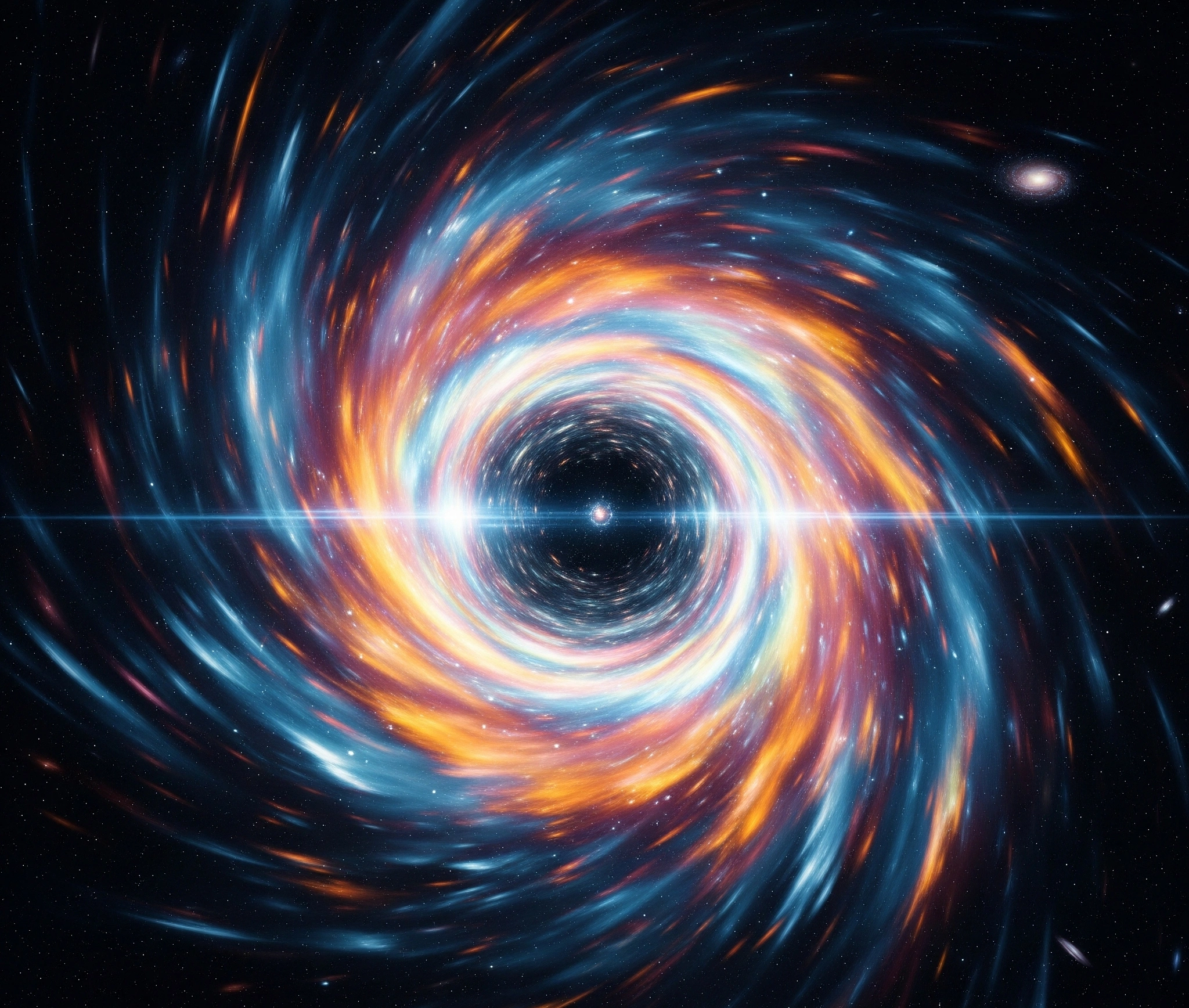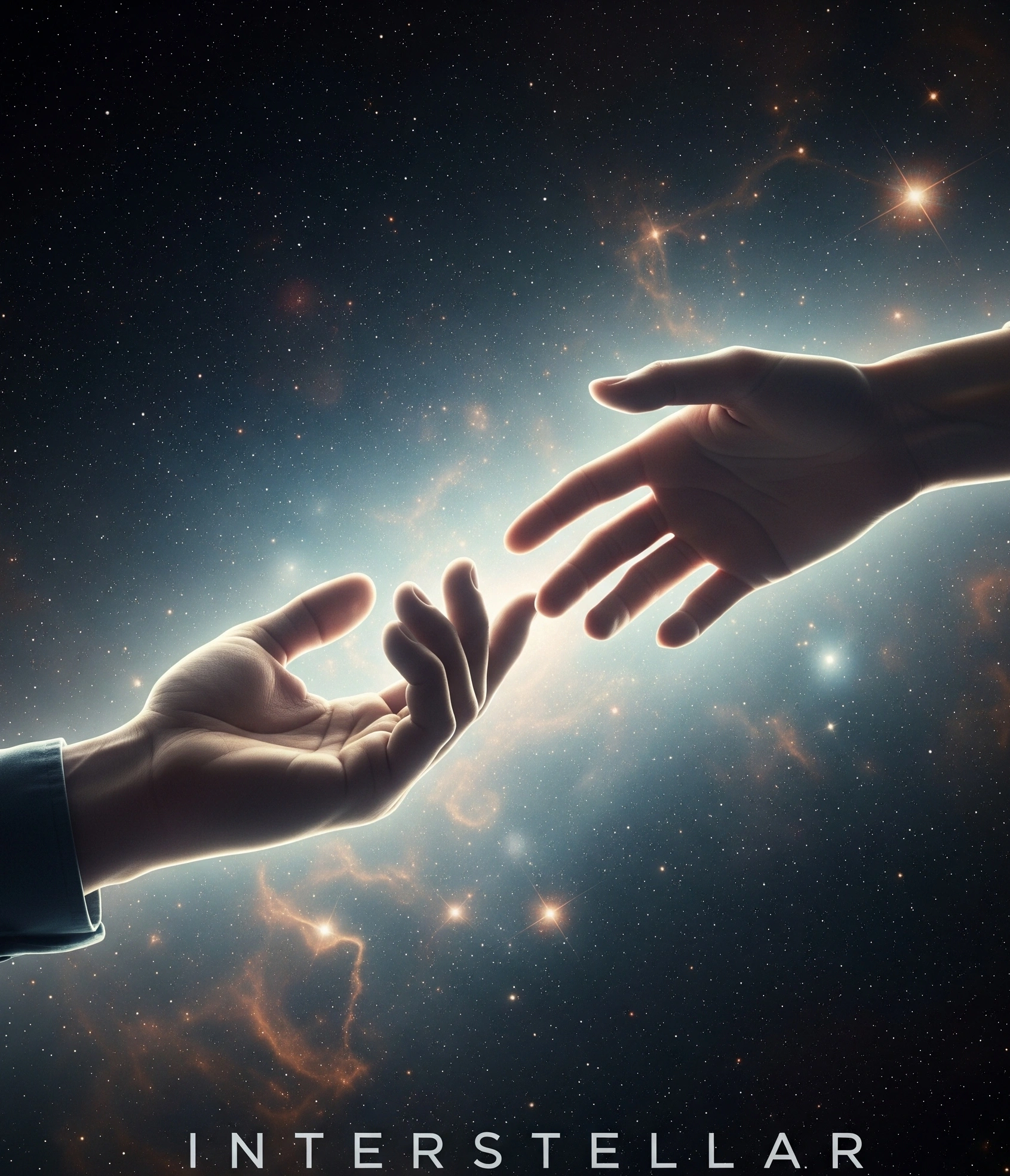Have you ever gazed at the night sky, feeling the immense scale of the universe and the fleeting nature of your own existence? The cosmos often presents profound paradoxes: vast distances crossed in moments, and moments stretching into lifetimes. We grapple with time as a constant, yet science reveals it is relative, bending and warping under gravity’s immense pull. What if these abstract scientific concepts, like time dilation and wormholes, are not just theoretical physics? What if they are deeply intertwined with our most profound human emotions—love, loss, and connection? This article promises a journey through Christopher Nolan’s cinematic masterpiece *Interstellar*. It will reveal how the film masterfully blends complex scientific principles with the raw power of human feeling, making Interstellar time and space a profound exploration of love and connection across dimensions, not just physics.
Table of Contents
- Understanding the Fabric of Reality: Time and Space in ‘Interstellar’
- The Human Element: Archetypes of Connection Across Dimensions
- The Emotional Gravity: ‘Interstellar’s’ Time Dilation in Action
- Navigating Our Own Dimensions: Practical Insights from ‘Interstellar’
- Beyond the Stars: ‘Interstellar’s’ Timeless Message for Today
- The Enduring Echo of Time and Love
Understanding the Fabric of Reality: Time and Space in ‘Interstellar’
In *Interstellar*, time and space are more than just narrative backdrops; they act as dynamic characters. They bend and stretch to serve the story’s emotional core. The film vividly portrays concepts from Einstein’s theory of relativity. Specifically, it shows time dilation, where time passes at different rates for observers in varying reference frames or gravitational fields. This phenomenon is not magic; instead, it is a direct consequence of the universe’s fundamental laws.
These concepts originated from Albert Einstein’s groundbreaking work on special and general relativity in the early 20th century. Notably, Kip Thorne, a renowned theoretical physicist, served as a scientific consultant for *Interstellar*. This ensured the film’s depiction of phenomena like wormholes and black holes was as scientifically accurate as possible, given current understanding. The film breaks down core components of these theories. These include time dilation near massive gravitational bodies (like Gargantua, the black hole), the theoretical possibility of wormholes as shortcuts through spacetime, and the mind-bending nature of a tesseract as a representation of higher dimensions.
Philosophically, *Interstellar* interprets these scientific principles as more than just physics equations. It explores their profound relevance to human life. This is particularly true for the concept of love as a force that transcends physical dimensions. The film consistently emphasizes that this is knowledge, not magic; it is a guide to understanding the universe’s mechanics, not a prophecy. Ultimately, it reveals how reality’s very fabric can be manipulated, and how these manipulations have deeply personal and emotional consequences.
 Archetypes of Connection Across Dimensions
Archetypes of Connection Across Dimensions
Cooper: The Archetype of the Explorer and Father
Cooper embodies the archetypal explorer, driven by an insatiable curiosity about the unknown. More profoundly, he is the archetype of the father. His love for his children propels him across galaxies and through time. His journey features sacrifice, determination, and a constant battle against time dilation’s crushing weight. The duality here is striking: his scientific quest for humanity’s survival links inextricably to his deeply personal mission to reunite with his family. His drive to explore the cosmos is fundamentally rooted in his earthly bonds. This highlights the paradox of seeking the infinite for the sake of the intimate.
Murph: The Archetype of the Grounded Seeker
Murph represents the archetype of the grounded seeker. She is a brilliant mind, rooted in the reality of Earth’s decline, yet relentlessly pursuing the truth. Her characteristics include intelligence, unwavering belief in her father, and a profound sense of abandonment. She experiences time’s relentless march most acutely, watching her father age only years while she ages decades. Her duality lies in her scientific pragmatism contrasted with her emotional connection to Cooper and her faith in the unseen “ghost.” She embodies human persistence and the enduring power of a child’s love, even across vast temporal distances.
Love: The Fifth Dimension
The film posits love as a powerful, almost tangible force—a “fifth dimension” that transcends the conventional four dimensions of spacetime. This concept, though metaphorical, serves as a crucial characteristic. It allows the characters to bridge impossible gaps. Love is the guiding principle that enables Cooper to communicate with Murph across time and space. Its duality is that it is both intensely personal and universally cosmic. It is an abstract emotion, yet the film portrays it as having concrete, measurable effects within its scientific framework. This suggests that love is not merely a feeling, but a fundamental aspect of reality, capable of influencing existence’s very fabric.
The Emotional Gravity: ‘Interstellar’s’ Time Dilation in Action
The scene on Miller’s Planet powerfully illustrates time dilation’s brutal emotional impact. Cooper, Brand, and Doyle land on a planet orbiting Gargantua. Here, every hour spent on the surface equals seven years back on Earth. This occurs due to the black hole’s immense gravitational pull. They face immediate peril from colossal tidal waves. In their desperate escape, Doyle tragically dies. The crew barely makes it back to the Endurance, having spent only a few hours on the planet.
Upon their return to the Endurance, they find Romilly, who has been waiting patiently. For him, 23 years, 4 months, and 8 days have passed. He has aged significantly, while Cooper and Brand have barely changed. The “Aha!” moment, for both characters and the audience, occurs when Cooper watches the accumulated video messages from his children. He sees his son, Tom, grow from a young boy to a man. Tom gets married, has a child, and finally, tells his father that he is now the same age Cooper was when he left. Murph, too, sends a message. Her voice fills with a lifetime of pain and resentment over his absence.
This sequence is profoundly impactful. It’s not just a scientific demonstration of time dilation; it’s a raw, emotional punch. The scientific concept directly translates into the agonizing reality of lost time, missed milestones, and the crushing weight of separation. The film brilliantly illustrates how human connection—the bond between parent and child—is tested. Ultimately, the cold, hard science of relativity amplifies this connection. Cooper’s tears are not just for the time lost. They are for his mission’s fundamental paradox: saving humanity at the cost of his own humanity, measured in the years stolen from his children.
Practical Insights from ‘Interstellar’
Understanding the profound interplay of time, space, and emotion in *Interstellar* is more than just appreciating a sci-fi epic. It’s about gaining a deeper awareness of the dimensions that shape our own lives. Real transformation requires concrete action and critical self-reflection.
Here are 2-3 concrete practices for engaging with the insights from *Interstellar*:
1. Embracing the Flow of Time: Mindfulness and Presence:
- How to Apply: Cooper experiences time differently, and we can similarly become more aware of how we perceive and use our time. Practice mindfulness exercises, focusing on the present moment. Engage fully in conversations, tasks, and experiences. Recognize that every moment is unique and irreversible. This helps combat the feeling of time slipping away, allowing you to appreciate the “now.”
- Philosophical Meaning: This is an empowering self-practice, not a mystical ritual to control external forces. It’s about cultivating a deeper relationship with your own temporal experience. It helps you find richness and meaning in the present, regardless of external pressures.
2. Bridging Distances: Nurturing Connection:
- How to Apply: *Interstellar* highlights human connection’s enduring power across vast distances and times. Actively invest in your relationships, even when physical proximity is limited. Use technology to bridge gaps, but also prioritize quality, meaningful interactions. Express your love and appreciation regularly. Recognize that emotional bonds can transcend physical separation.
- Philosophical Meaning: This practice emphasizes the universal human need for connection. It’s an offering of gratitude for the people in your life. It recognizes that strong emotional ties are a fundamental aspect of a fulfilling existence, much like a force that binds us across any perceived “dimension.”
3. Understanding the Unseen: Cultivating Scientific Curiosity:
- How to Apply: The film encourages us to look beyond the obvious and embrace complex scientific ideas. Cultivate your own curiosity about the world around you. This applies whether it’s physics, biology, or the social sciences. Read, watch documentaries, and ask questions. Understanding how the universe works can provide a deeper appreciation for both its grandeur and its subtle intricacies.
- Philosophical Meaning: This is about empowering yourself with knowledge to understand the larger forces at play. It helps you avoid viewing complex phenomena as purely magical or incomprehensible. It’s a pragmatic approach to understanding reality, not a fixed prediction, fostering a sense of wonder and informed perspective.
‘Interstellar’s’ Timeless Message for Today
The profound exploration of Interstellar time and space in the film is not merely a cinematic spectacle. Its themes resonate deeply with contemporary challenges. In an age of rapid technological advancement and constant connectivity, we often feel both more connected and more isolated. The film’s depiction of time dilation speaks to our modern anxieties. These include time management, career burnout, and the feeling that life is passing us by too quickly. The vast distances and the struggle for communication mirror the challenges of maintaining long-distance relationships or feeling disconnected in an increasingly digital world.
Moreover, *Interstellar* champions scientific literacy and human ingenuity’s importance. This is especially true in the face of existential threats. This message is particularly relevant in an era of climate change and global challenges. Understanding this film’s core messages brings immense tangible benefits. It fosters a deeper appreciation for scientific principles. It also encourages us to prioritize human connection over material pursuits. Furthermore, it inspires resilience in the face of seemingly insurmountable obstacles. By recognizing the powerful interplay between science and emotion, we can navigate our own temporal and spatial challenges with greater wisdom and empathy.
The Enduring Echo of Time and Love
*Interstellar* serves as a powerful reminder that the universe, in all its scientific complexity, is ultimately a canvas for the human story. Its exploration of Interstellar time and space forces us to confront uncomfortable truths about our place in the cosmos, the relentless march of time, and the extraordinary power of love. It demystifies the abstract concepts of relativity. It grounds them in relatable human experiences of longing, sacrifice, and hope. The film empowers us to look beyond our immediate perceptions. It encourages us to question the boundaries of what is possible. It also helps us recognize that even in the face of cosmic indifference, human connection remains our most profound and enduring force.
“Love is the one thing that transcends time and space.”
Call to Action
The journey through time and space begins with understanding. Explore the depths of human connection and scientific wonder.
Context and References
- Read more about the universal principles of color theory in La La Land.
- External References:
- Einstein, Albert. *Relativity: The Special and General Theory*. (For foundational concepts of relativity).
- Thorne, Kip S. *The Science of Interstellar*. W. W. Norton & Company, 2014. (For scientific accuracy behind the film).
- Nolan, Christopher (Director). *Interstellar*. Paramount Pictures / Warner Bros. Pictures, 2014. (The primary subject of analysis).
Disclaimer: This content is provided for educational and cultural understanding. Scientific and cinematic concepts are part of a rich tradition, offering guidance for self-reflection and personal growth, not deterministic prophecies or absolute judgments.
About the Author/Source: This wisdom is shared by CosmicScribe — a symbolic figure representing timeless wisdom, simplicity, and compassion. These writings are meticulously crafted by the KamarFilm.com team, comprised of cultural researchers, academics, and spiritual practitioners dedicated to preserving and translating ancient wisdom into a relevant format for contemporary generations. We believe that ancestral heritage is not merely a relic, but a compass for life. Each article is written through a process of research, cross-generational discussion, and deep contemplation, to ensure accuracy and the profound nobility of its contained values. Learn more about our authors and philosophy.

